Everything you need to know about baking with olive oil including the best olive oil for baking cakes, breads, muffins, and more. We also share our favorite olive oil baking recipes, and how and when to use olive oil instead of butter.
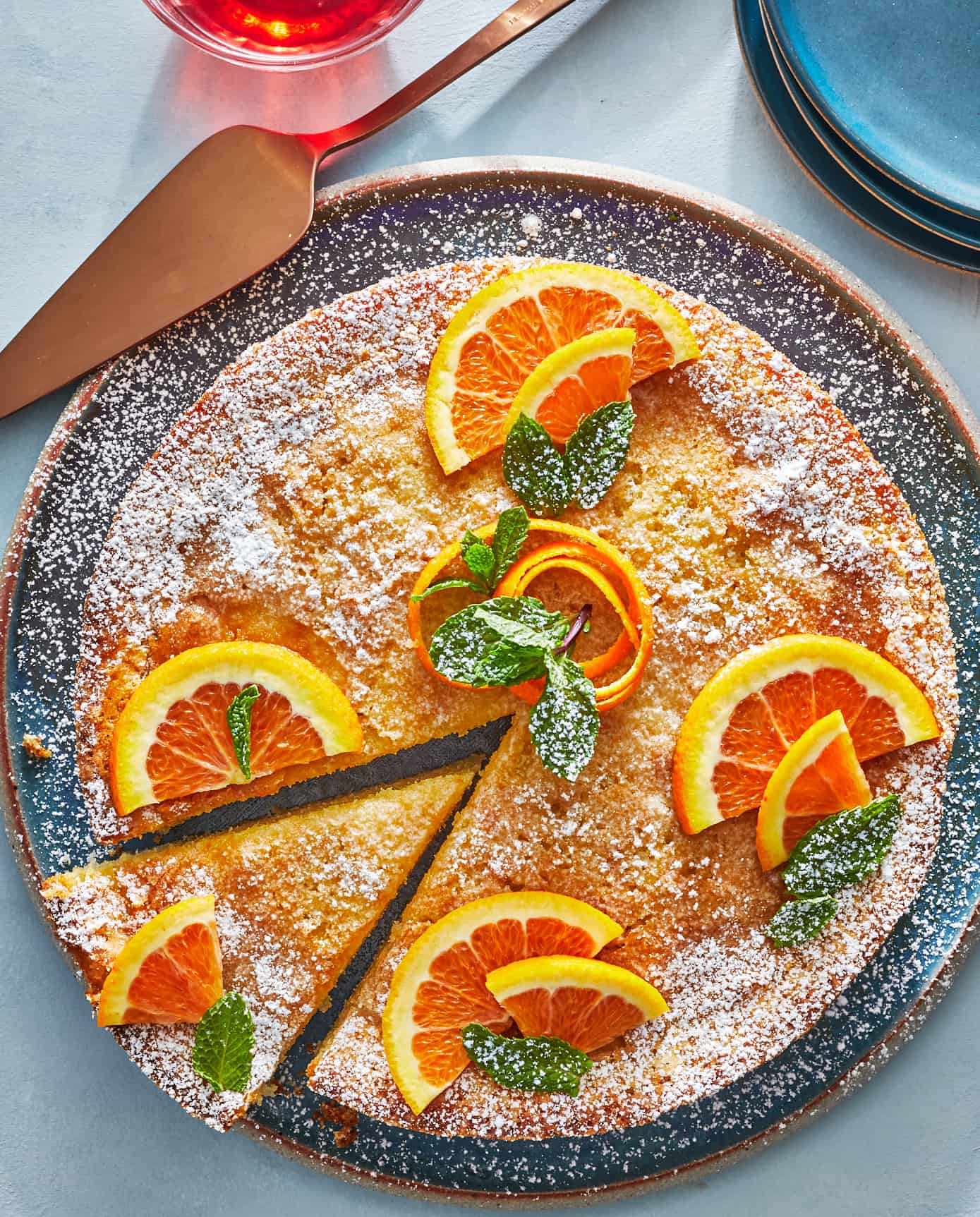
If you’ve recently adopted the Mediterranean diet, you may have worried about giving up your beloved baking hobby. But don’t worry! You can keep your bread, muffins, and even cakes.
As a professional baker, one of my favorite adjustments to better align my passions with the principles of eating wholesome meals is by baking with olive oil. For years, I’ve been using extra virgin olive oil in most recipes that call for vegetable oil. I’ve even swapped olive oil in for traditional butter-based recipes like my olive oil-based Strawberry Shortcake Recipe.
It’s safe to say I have embraced olive oil as my everyday baking oil of choice and you can too! Read on for my complete guide to baking with olive oil and how to use this heart-healthy fat your favorite baking recipes!
Table of Contents
- Why Olive Oil is a Good Baking Oil
- Olive Oil Varietals and their Flavors
- Is it Healthy to Bake with Extra Virgin Olive Oil?
- Concerns about Smoke Point and Stability
- The Function of Fats in Baking
- Butter vs Olive Oil: The Difference Between Liquid and Solid Fats in Baking
- How to Swap Olive Oil in Baking
- How to Substitute Olive Oil for Vegetable Oil
- How to Substitute Olive Oil for Butter
- When in Doubt, Compromise
- Butter vs Olive Oil: When Not to Swap and Why
- Favorite Sweet and Savory Olive Oil Baking Recipes
- Try Baking with Olive Oil in These Recipes!
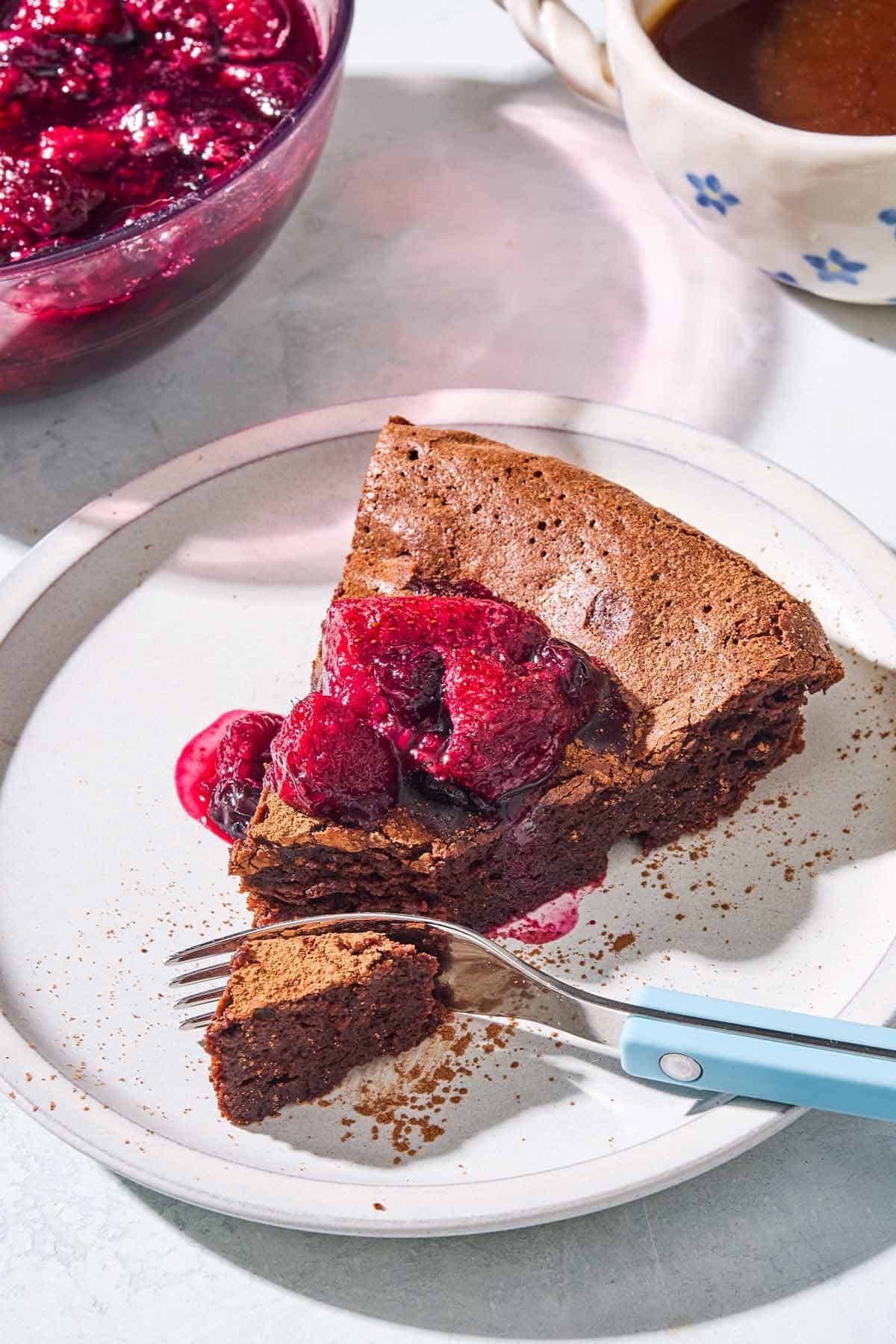
Why Olive Oil is a Good Baking Oil
Olive oil has a reputation for having too dominant of a flavor to bake with, but I think its flavor is one of its strong suits! You just need to be discerning with the variety you choose and take a few things to heart.
- Most baking recipes call for small quantities of oil. This means olive oil’s flavor is not typically as pronounced in the final baked good as you may think.
- Its fruity, grassy notes usually play nicely with the other flavors, like Apples, figs, lemon, and even Chocolate.
- With so many varieties of olive oil to choose from, you end up with a lot of control over how mild, strong, buttery, fruity, or bitter the flavors are. (More on this in the section below.)
- Olive oil works like any other vegetable oil you’d use for baking. It makes tender cakes and breads with a softer crust and crumb.
- However, unlike other vegetable oils, olive oil is an excellent source of antioxidants, vitamin E, and vitamin K. It’s rich in monounsaturated fatty acids, which benefit heart health and protect against heart disease.
- READ MORE: Olive Oil 101: Everything You Need to Know
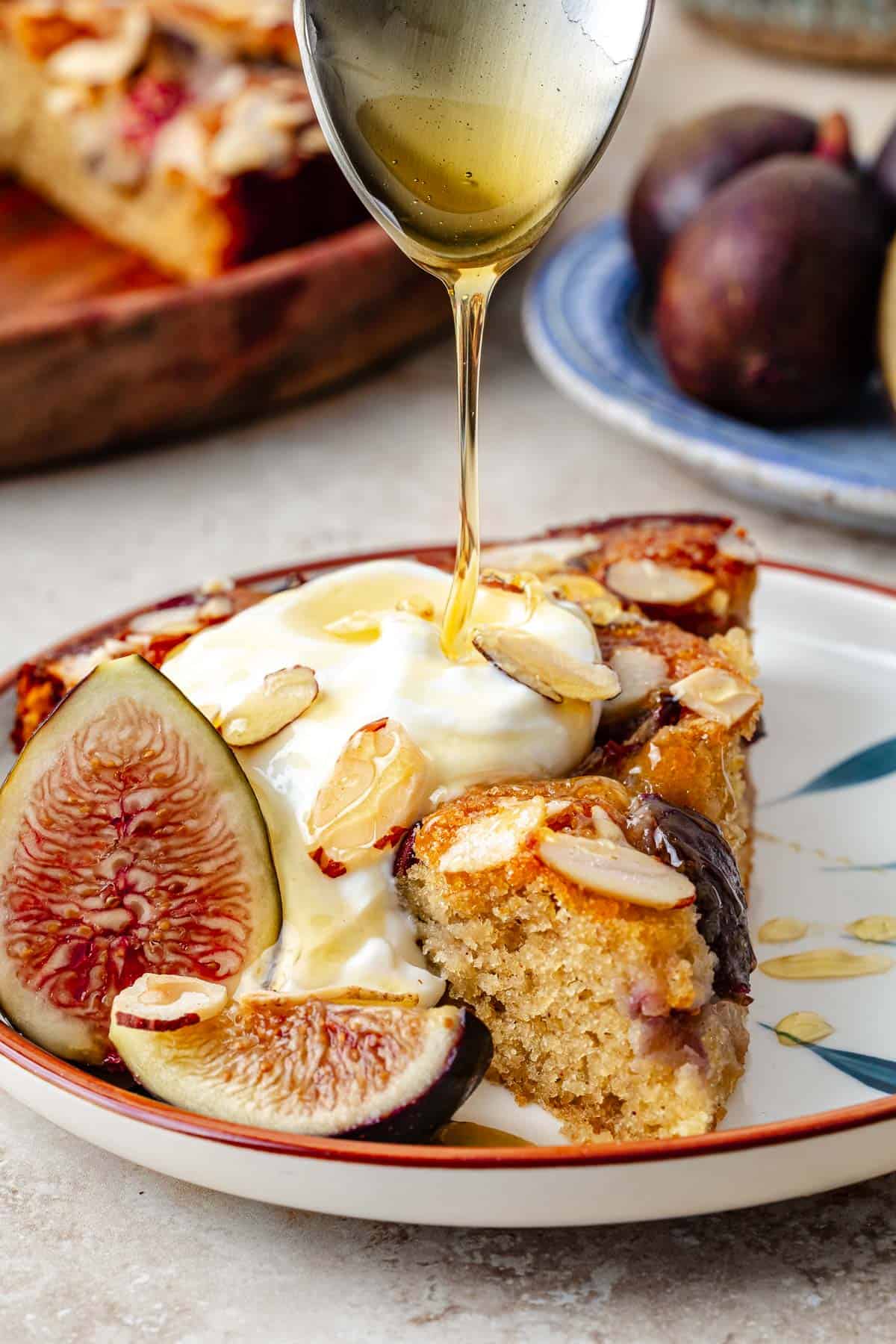
Olive Oil Varietals and their Flavors
I exclusively use extra virgin olive oil for baking. Extra virgin olive oil is squeezed and separated from crushed olives without the use of heat and without altering the natural oil in any way. This minimal processing leaves the antioxidant-rich polyphenols and beneficial fatty acids intact.
Extra virgin olive oil is made using the best, ripest olives with the highest polyphenol count (meaning its high in antioxidants). There are hundreds of cultivars of olive and each one has its own characteristic flavor.
Here are my top recommendations for olive oils to bake with from the mildest to the most intense. Choose a variety that pairs well with your recipe:
- Arbequina: This Spanish green olive cultivar, which is often grown in California, is small and sweet. It produces a buttery, fruity, and smooth olive oil with notes of apple and banana. It’s particularly good for sweet baking. Try it in this healthy banana bread.
- Nocellara: This bright green olive originates from Sicily and is also known as Castelvetrano. It produces a mildly bitter olive oil with a vegetal, spicy finish. I like how it works with fruit in this Fig Cake or these Strawberry Shortcakes.
- Hojiblanca: This is another Spanish green olive cultivar, and it’s slightly more bitter and spicy than the other two. It produces an olive oil with hints of almond, grass, and apple. It’s slightly more suited to savory baking, but I actually use this most often for all of my baking. Add it to Pizza Dough or try it in a Farinata.
You can also choose a blend rather than a single varietal olive oil, as blends are more affordable. It is helpful if the label gives information about the varietals included so you can get an idea of the flavor and intensity. While single-cultivar olive oils are generally more expensive, they tend to be higher quality, and you’ll have a clear idea of the flavor profile and the polyphenol level.
I would avoid refined olive oils often labeled as light or pure. The bland taste comes with even blander health benefits, often with little antioxidant value, in which case you might as well use a generic cooking oil.
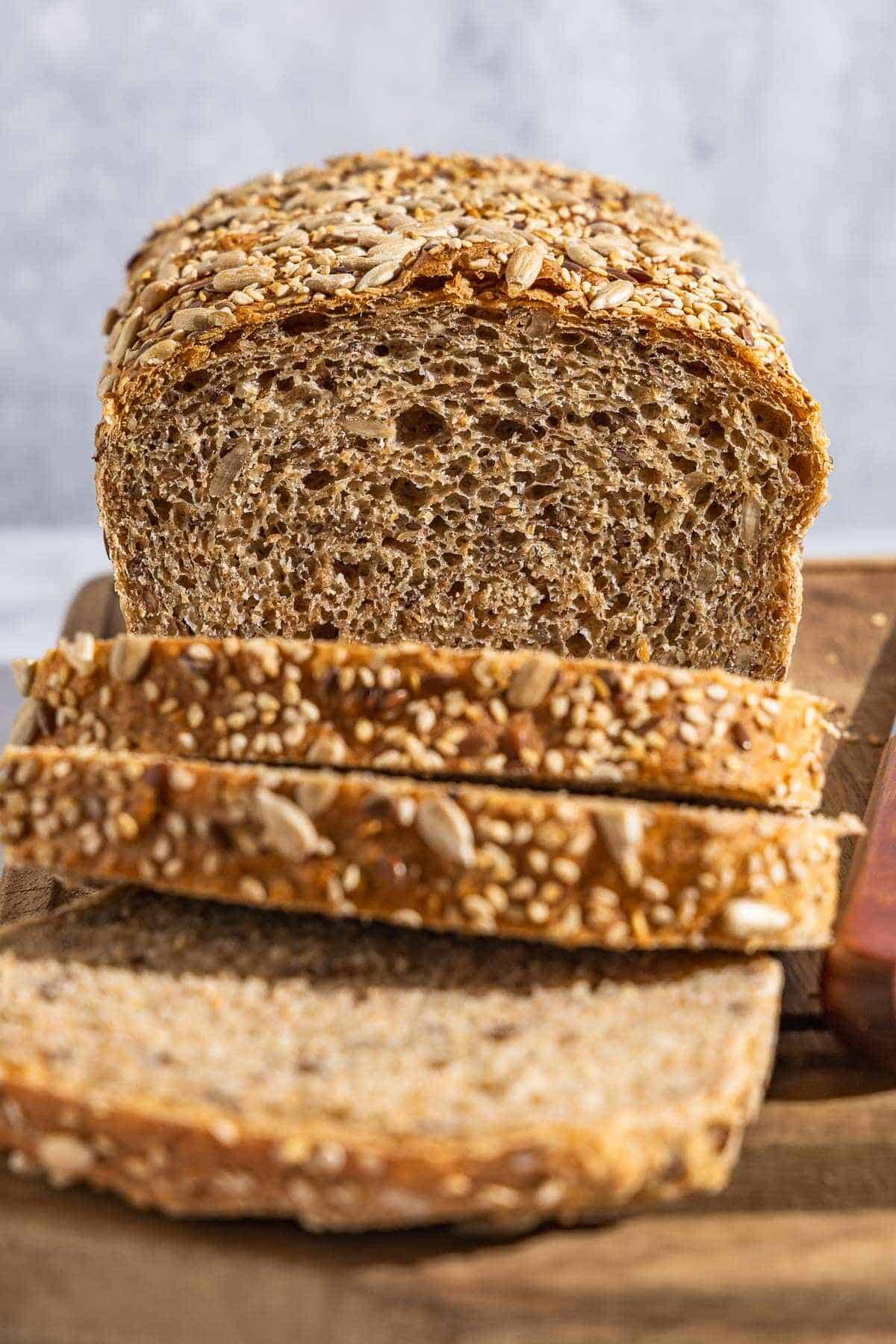
Is it Healthy to Bake with Extra Virgin Olive Oil?
Extra virgin olive oil, with its antioxidant and anti-inflammatory properties, is often considered a healthier choice than butter or other fats typically used for baking. That said, dessert is still dessert. Most desserts are still high in calories, with refined sugar and low fiber. Just because a cake has olive oil in it, does not magically mean that it’s a health food.
However, all else equal, a dessert made with extra virgin olive oil may well be a delicious alternative. Saturated fat, like butter, has been shown to raise blood cholesterol and increase the risk of coronary heart disease. When substituted for saturated fat, monounsaturated fats, like those in olive oil, can help lower your “bad” LDL cholesterol. Being healthy also means enjoying a treat every once and a while, even on the Mediterranean diet, which is all about moderation.
- GET THE FACTS: Consumption of Olive Oil and Risk of Total and Cause-Specific Mortality Among U.S. Adults, Journal of the American College of Cardiology
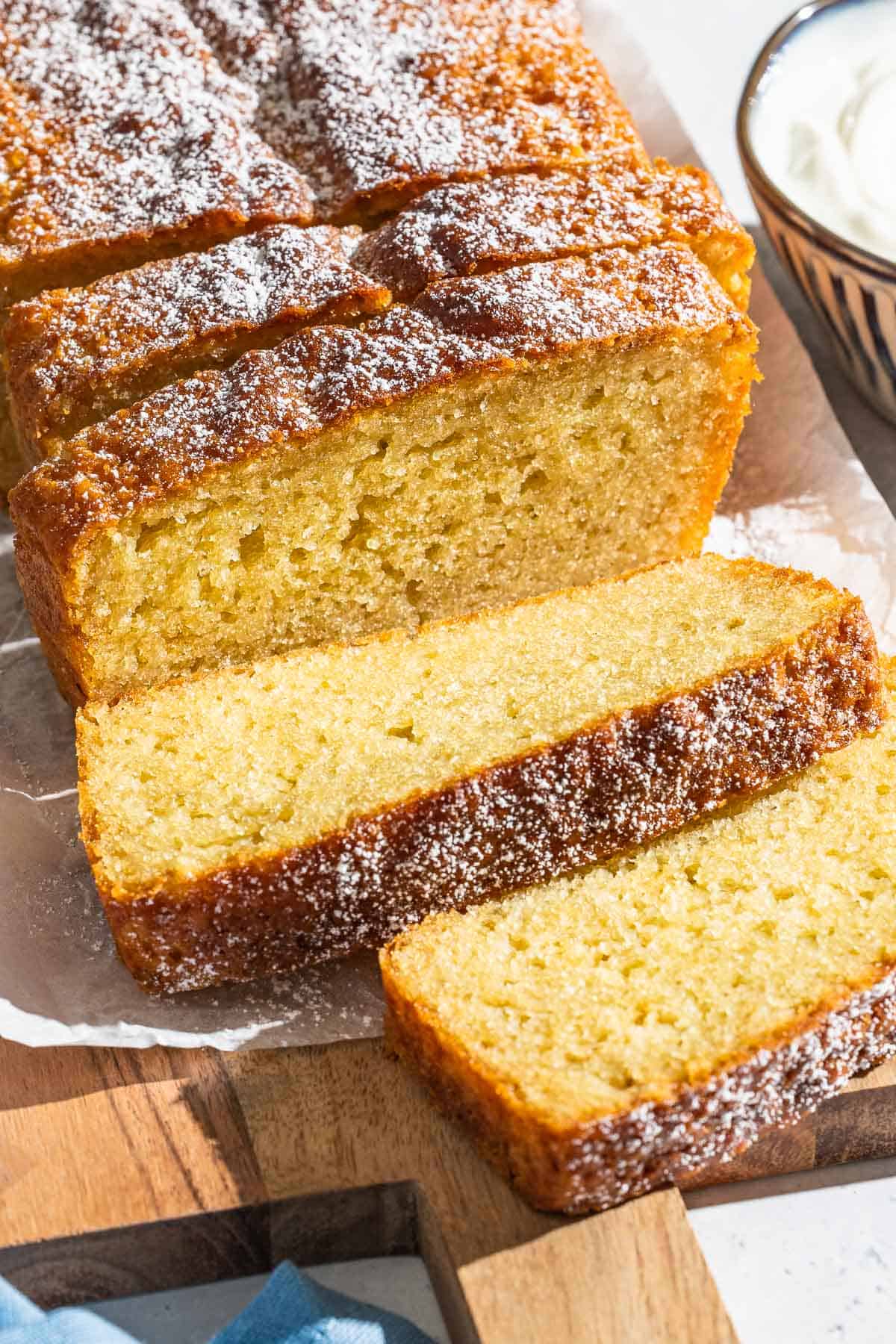
Concerns about Smoke Point and Stability
Many home bakers have fears about heating olive oil, its smoke point, and oxidative stability. Let me address those one by one below.
- Olive oil is a very stable oil. You can use extra virgin olive oil safely for most cooking and baking. It has a fairly high smoke point of between 374°F and 405°F.
- You don’t have to worry about olive oil’s smoke point unless you’ve burnt something beyond recognition–which is its own problem. This is true even when you’re baking something at a high temperature like this Focaccia at 450°F.
- Baking mainly relies on radiant heat transfer, a type of indirect heat. Items placed in the oven take time to heat up. While I don’t recommend it, this is why you can stick your hand in a hot oven and it doesn’t immediately burn.
- Baked goods are also protected by the water they contain. In normal circumstances, the water prevents them from reaching temperatures higher than water’s boiling point of 212°F. Most baked goods are done baking when their internal temperature reaches between 180°F and 210°F. In other words: well below extra virgin olive oil’s smoke point.
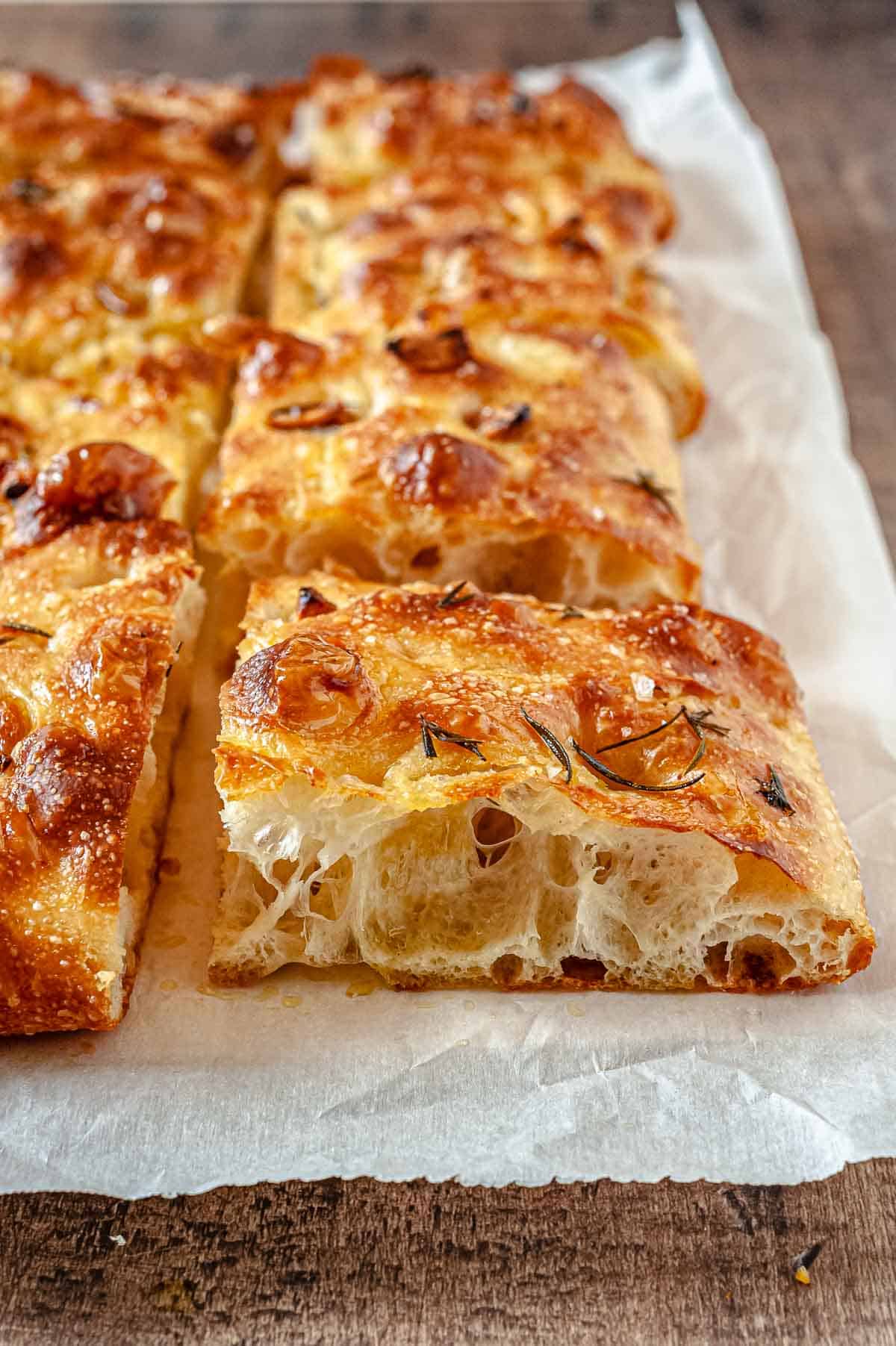
The Function of Fats in Baking
Before we look at how to substitute olive oil into your favorite baking recipes, let’s take a look at what fats actually do in baking. All fats provide tenderness, richness, and flavor in baked goods. Fat adds tenderness by coating structure-builders like gluten and other proteins, which limits their development. This is what makes shortbread crumbly and cakes tender.
Fat adds flavor because it absorbs flavor compounds and releases them slowly as you chew. Because fat coats the tongue, it provides richness and a pleasant mouthfeel.
Fat is also useful in making yeasted doughs softer and more flexible, allowing for more volume as the dough rises, like in this fluffy Challah Bread. Breads and yeasted doughs that include some fat have a softer crust and a more tender crumb.
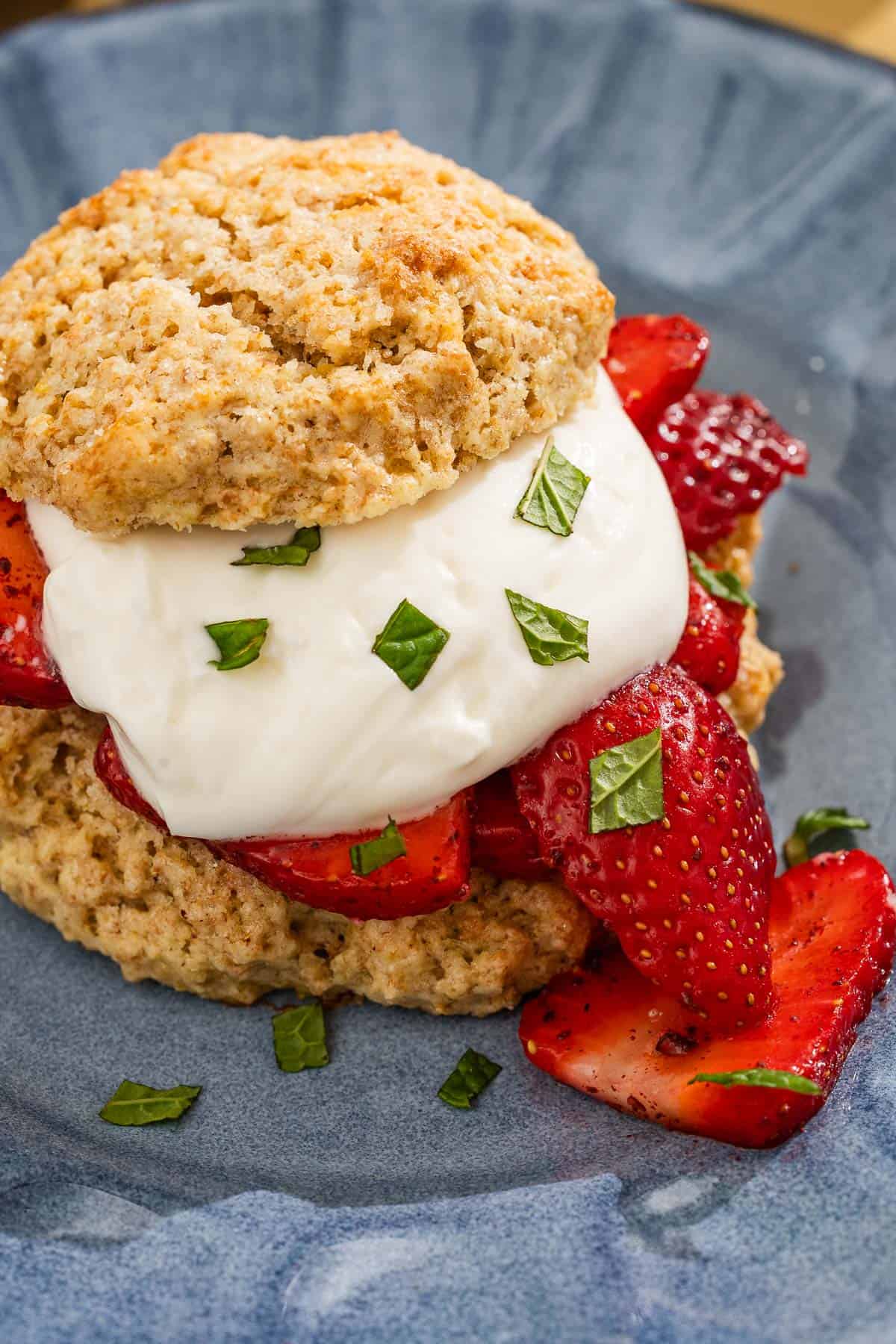
Butter vs Olive Oil: The Difference Between Liquid and Solid Fats in Baking
There are two main types of fats in baking: solid fats like butter, shortening, or lard, and liquid fats, like vegetable and seed oils. Solid fats like butter contribute to leavening or creating flaky layers. Liquid fats contribute to moistness.
In your baking journey, you’ve inevitably baked a recipe that started by creaming softened butter with sugar. This step creates tiny air pockets in the batter that expand while the cake bakes, making it rise and giving it a velvety texture. This aeration surprisingly contributes more to leavening even when baking powder is used. As a liquid, oil (including extra virgin olive oil) cannot help with aeration or leavening in the same way.
Liquid fats like olive oil make moist, tender baked goods with a denser crumb. Because olive oil is liquid, it is incorporated into batters easily. This coats the flour and proteins more efficiently than butter and boosts tenderness.
Surprisingly, oils contribute more to moistness in baked goods than water (I’m betting you’ve had a surprisingly dry butter cake!) But while olive oil makes cakes soft and tender, compared to butter, you should expect the texture to be more compact and not as velvety.
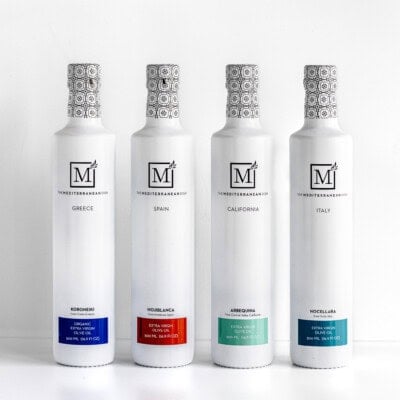
Everyday Olive Oil Bundle
Four of our top-selling olive oils, perfect for everyday use.
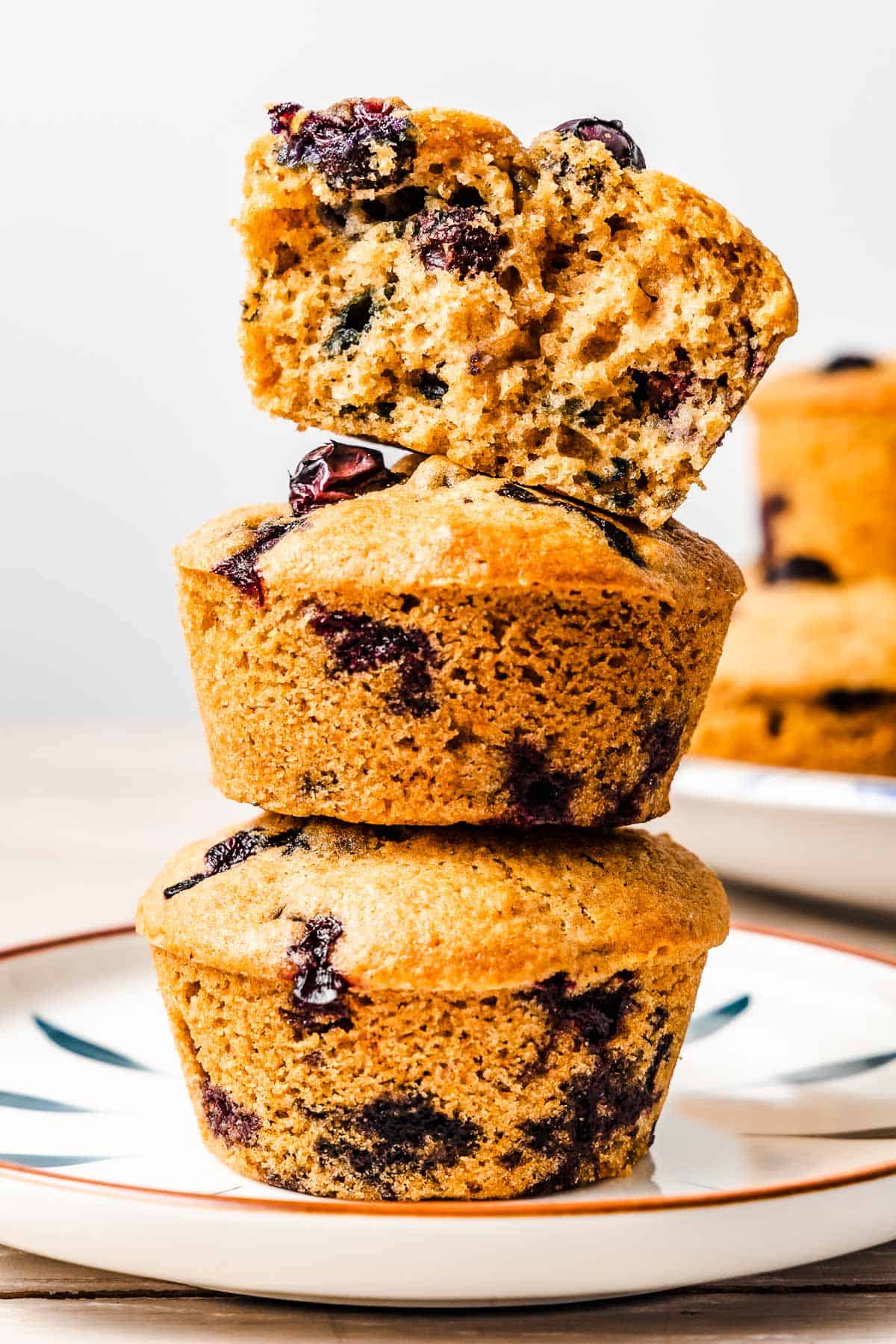
How to Swap Olive Oil in Baking
The easiest is way to swap olive oil for butter in baking is to stick to recipes that were developed to use olive oil. But if you’re not afraid of experimentation and the occasional mishap, here is a guide to substituting olive oil in baking.
How to Substitute Olive Oil for Vegetable Oil
If you have a recipe that already calls for a liquid vegetable oil, this is the easiest swap. You can always swap oil for oil. Bear in mind whether olive oil’s flavor would pair well with the other flavors in the recipe.
How to Substitute Olive Oil for Butter
You can successfully substitute olive oil for butter in many, but not all recipes. Butter and olive oil have very different compositions and characteristics. This isn’t necessarily a problem in some recipes but can drastically change others. Here’s how to swap olive oil for butter:
- Melted butter: I’m never afraid to try swapping olive oil in recipes that call for melted butter. As a general rule of thumb, I replace the butter with 3/4 of the amount of olive oil. Then I increase the liquids by 1/4 the amount.
- For example: If a recipe called for 1 cup of butter and 1 cup of milk, I replace the butter with 3/4 cup of olive oil and increase the milk to a total of 1 1/4 cups.
- Softened butter creamed with sugar: It can be done, but not always successfully. Keep in mind that it will always change the texture of the cake, it’s just whether it’s too much. I use the same calculations as for melted butter.
When in Doubt, Compromise
When I’m nervous about negatively affecting the texture, one technique I often use is to substitute half the butter with olive oil, like in this Lemon Ricotta Cake. You get the best of both worlds: Butter’s structure and leavening benefits, and olive oil’s flavor, added tenderness and health benefits. For example, if a recipe calls for 1 cup of butter, I use 1/2 cup butter and 1/2 cup olive oil.
When I tested the same Lemon Ricotta Cake using only olive oil, the cake didn’t rise as much. It was denser and the crumb was coarse and less velvety. It was still a delicious cake, but by using a blend of butter and olive oil, the cake was fluffy, velvety, and moist with a balanced flavor.
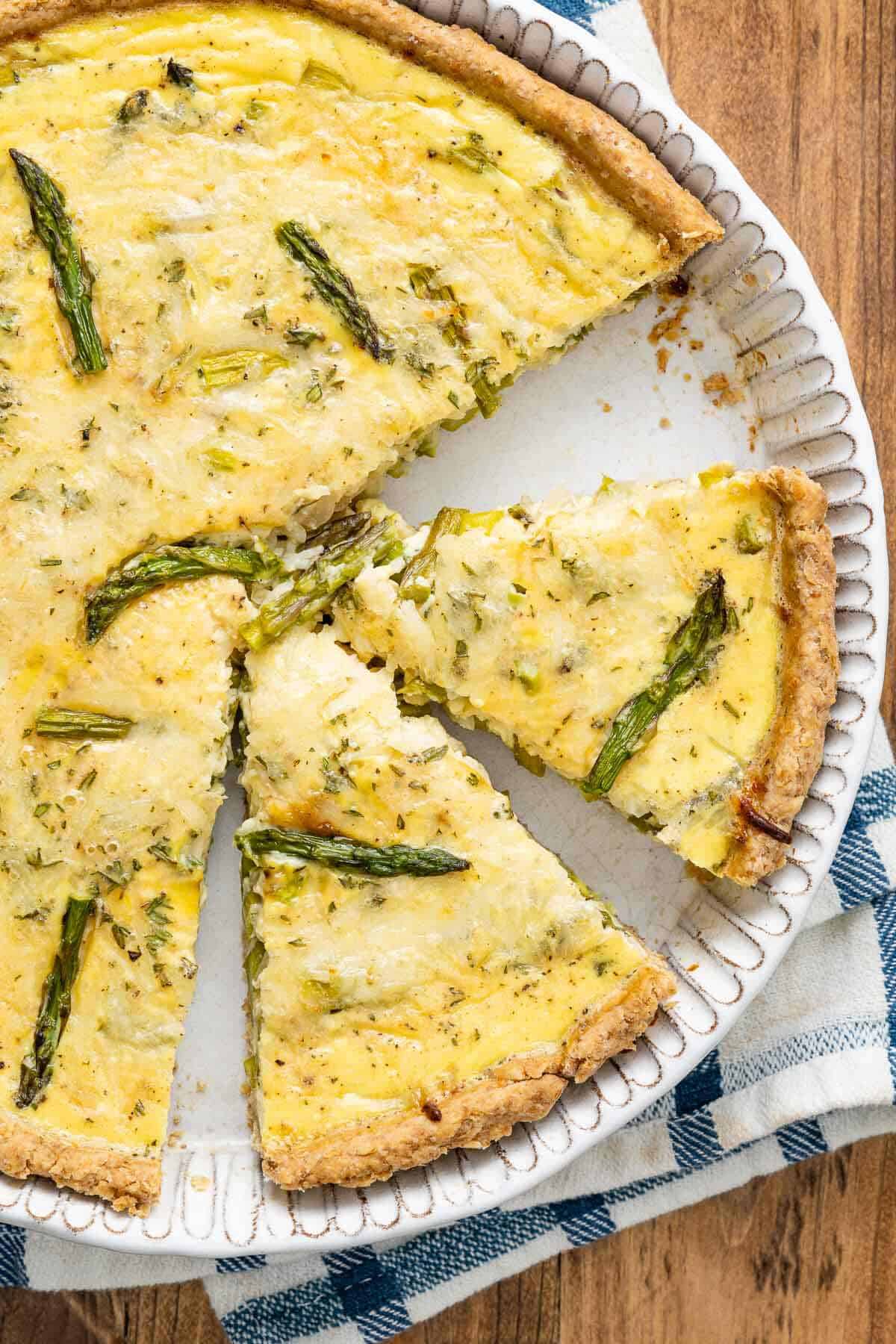
Butter vs Olive Oil: When Not to Swap and Why
There are a few cases where you should not swap olive oil and butter:
- Flaky pastries: Recipes that rely on cutting cold butter into the flour (like pie dough) cannot be made as successfully with olive oil. When cold butter is cut into flour to form small, solid chunks, the water in the butter evaporates in the oven. This creates steam pockets that give the dough its signature flaky texture.
- Laminated doughs: Infinite layers of pastry and butter (like croissants and puff pastry) require rolling out dough with thin sheets of cold butter layered between. During baking, the butter melts and the water content turns to steam, puffing up the layers to create a light, airy structure.
- Frostings and glazes: These rely on butter being a solid at room temperature.
You can make an olive oil crust, but choose a recipe that was developed using olive oil rather than substituting it into a recipe that calls for a solid fat like butter or shortening, like this Asparagus Quiche. Oil crusts are not flaky but they are tender. They’re also resistant to soaking up wet, juicy fillings so they don’t get soggy.
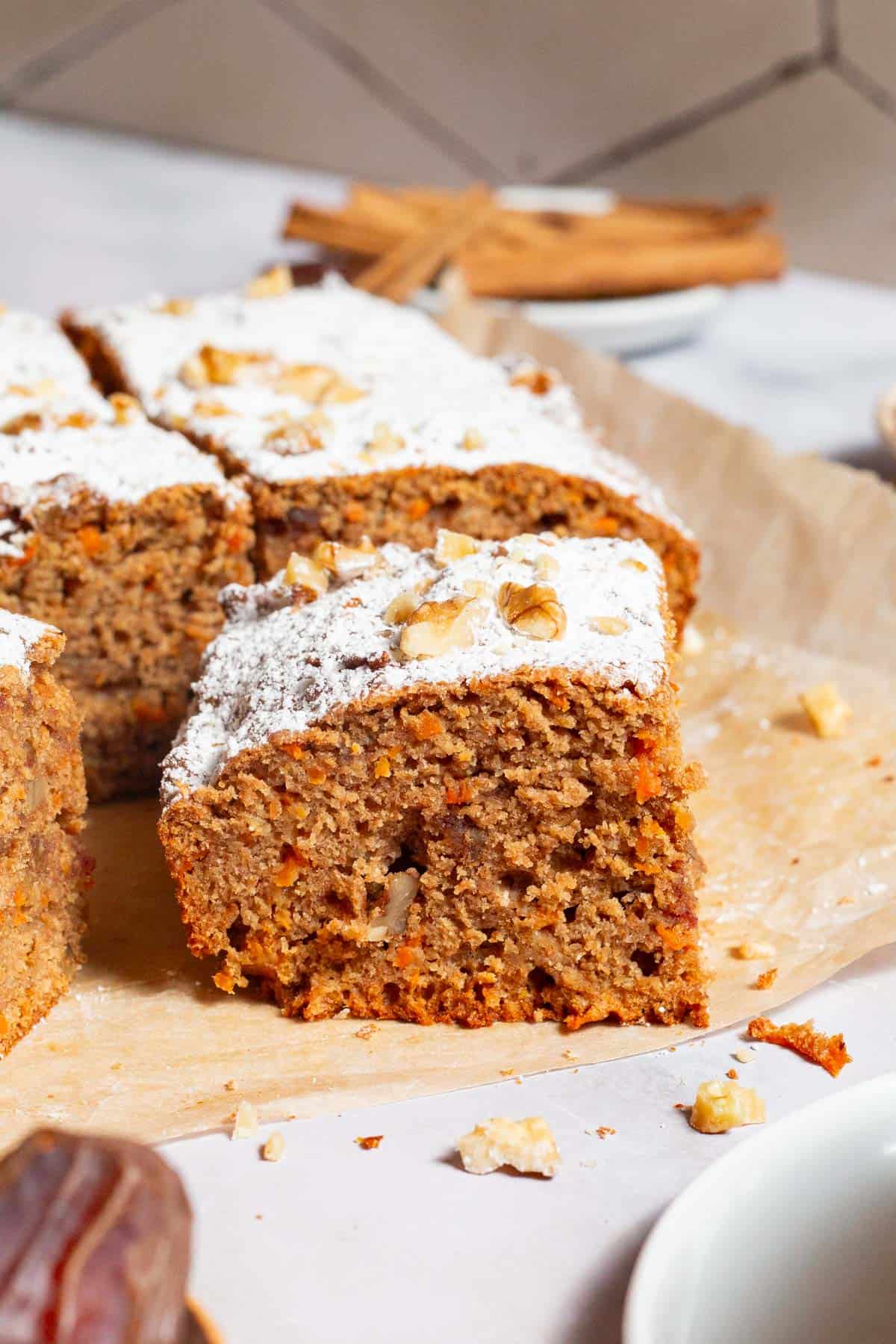
Favorite Sweet and Savory Olive Oil Baking Recipes
I’ve linked to different recipes throughout this post, but sometimes it’s nice to have a list. Here are some of my favorites:
Olive Oil Breads, Breakfast, and Snack Cakes
Olive Oil Cakes and Cookies
Sweet or Savory Extras
- Rustic French Style Tomato Tart
- Apple Empanadas
- Asparagus Quiche
- Baklava Ice Cream Sundae
- Strawberry Shortcakes with Sumac, Whipped Labneh and Mint
- Baklava Pumpkin Pie
Try Baking with Olive Oil in These Recipes!
Browse all Mediterranean recipes.
Visit Our Shop.

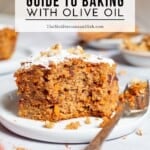

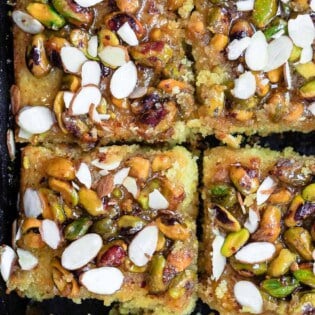
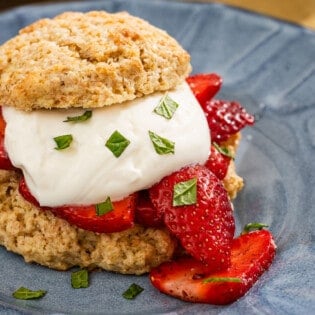
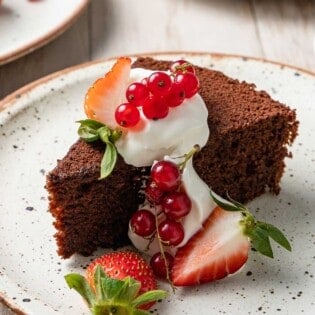
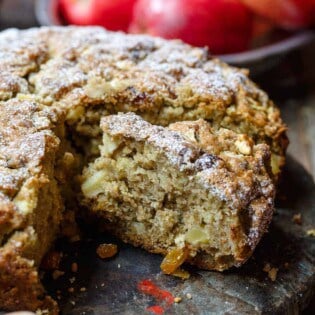
Thank you – this is incredibly helpful. I’ve been slowly making the changeover sometimes with success others not. These conversions and olive oil taste differences will be very helpful.
Linda
So helpful, thank you! Would love a print button for this!
Hi, Mia. You can find the “print” button for all of our recipes right under the title at the top of the post (next to the black “Jump to Recipe” button).
This was helpful. Thank you!